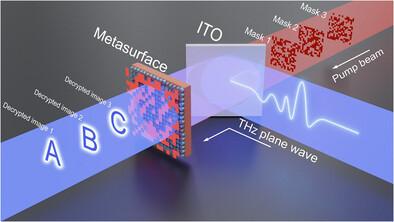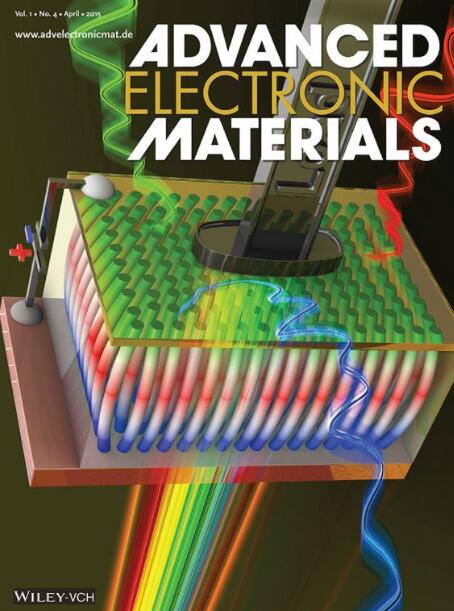基于光控超表面的46通道图像加密
IF 5.3
2区 材料科学
Q2 MATERIALS SCIENCE, MULTIDISCIPLINARY
引用次数: 0
摘要
随着现代社会数据量的快速增长,高效、安全的信息传输、存储和加密方法变得必不可少。得益于高密度存储和对2D数据的快速访问,光学加密在数据保护方面显示出巨大的前景。超表面作为一种能够精确控制电磁波的二维人工超材料,极大地推动了多通道光加密技术的发展。然而,许多现有的基于超表面的光学加密设备受到静态操作和对材料或光源的严格要求的限制。本文提出了一种46通道图像加密装置,与光学控制的超表面集成,以实现动态可调和高容量的光学加密。开发了一种有效的二元振幅相位反设计方法,通过将二元振幅分布结合到各向同性相位超表面中来实现高性能光学加密。这种方法对光源或超表面施加了最小的额外要求。使用红外泵浦/太赫兹探针成像系统的实验演示证实了加密装置的有效性和稳健性,突出了其在先进和灵活的光学加密应用中的潜力。本文章由计算机程序翻译,如有差异,请以英文原文为准。

46‐Channel Image Encryption Based on Optically Controlled Metasurfaces
With the rapid growth of data volumes in modern society, efficient and secure methods for information transmission, storage, and encryption have become essential. Benefiting from high‐density storage and fast access to 2D data, optical encryption shows significant promise for data protection. Metasurfaces, as a type of 2D artificial metamaterials capable of precisely controlling electromagnetic waves, have greatly advanced the development of multi‐channel optical encryption. However, many existing metasurface‐based optical encryption devices are limited by static operation and stringent requirements on materials or light sources. Here, a 46‐channel image encryption device is proposed, integrated with optically controlled metasurfaces to achieve dynamically tunable and high‐capacity optical encryption. An efficient binary amplitude‐phase inverse‐design method is developed that enables high performance optical encryption by incorporating binary amplitude distributions into an isotropic phase metasurface. This approach imposes minimal additional requirements on the light source or the metasurface. Experimental demonstrations using an infrared‐pump/terahertz‐probe imaging system confirm the effectiveness and robustness of the encryption device, highlighting its potential for advanced and flexible optical encryption applications.
求助全文
通过发布文献求助,成功后即可免费获取论文全文。
去求助
来源期刊

Advanced Electronic Materials
NANOSCIENCE & NANOTECHNOLOGYMATERIALS SCIE-MATERIALS SCIENCE, MULTIDISCIPLINARY
CiteScore
11.00
自引率
3.20%
发文量
433
期刊介绍:
Advanced Electronic Materials is an interdisciplinary forum for peer-reviewed, high-quality, high-impact research in the fields of materials science, physics, and engineering of electronic and magnetic materials. It includes research on physics and physical properties of electronic and magnetic materials, spintronics, electronics, device physics and engineering, micro- and nano-electromechanical systems, and organic electronics, in addition to fundamental research.
 求助内容:
求助内容: 应助结果提醒方式:
应助结果提醒方式:


